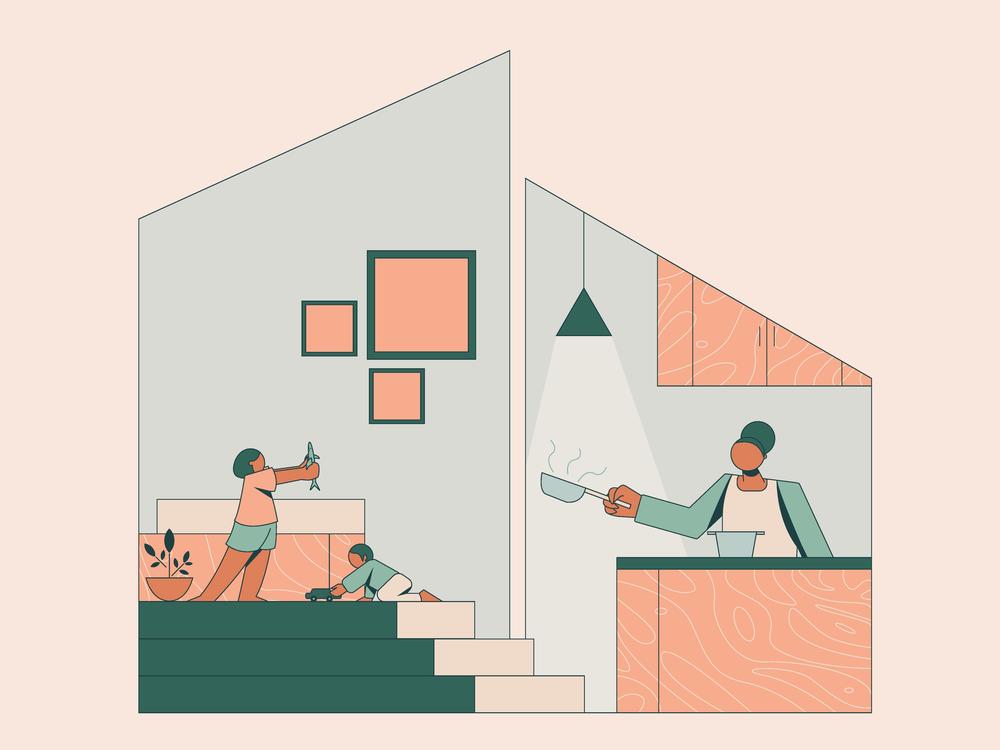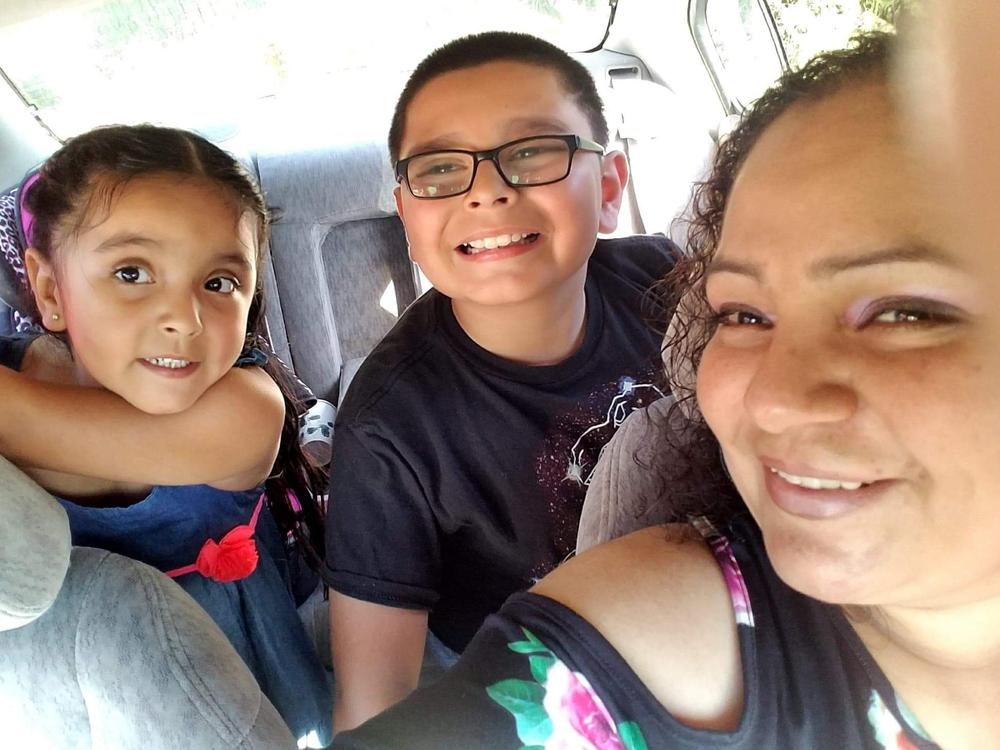Section Branding
Header Content
'This Is Too Much': Working Moms Are Reaching The Breaking Point During The Pandemic
Primary Content
Youli Lee is proud of the years she worked for the U.S. government, prosecuting cybercrime in some of the world's darkest places. These days, she's the one hiding out — mostly from her three children, ages 8, 11, and 13.
"I just actually locked my door so that nobody could come here," she says, from her bedroom.
The constant interruptions from children are happening in households across the country. Nearly half of all school districts in the U.S. started the school year with remote learning, including Lee's district in Fairfax County, Va. With the added complexities of managing multiple Zoom calls at work and online learning for the kids, parents – especially moms — are hitting a breaking point.
For Lee, the juggling act fell apart in the spring. Her husband, a doctor, was at the hospital seven days a week while she worked from home, struggling to maintain her own grueling schedule of nonstop work calls. That went on for weeks until she realized that her younger two children were routinely skipping lunch. Without the structure of the school day, the kids never quite knew when it was time to eat.
So, when news came that the kids' schools would only partially reopen at best, she realized that was it. "I can't keep this up," she remembers thinking. "This is too much."
Lee decided to take a leave of absence.
"It's an impossible task," says C. Nicole Mason, president and CEO of the Institute for Women's Policy Research, a Washington, D.C., think tank focused on economic equity for women. "Until we can figure out care, until we can figure out how to open the schools, you can just hang it up ... for many women."
Mason is a single mom whose 10-year-old twins are also doing remote school from home this fall. And she's furious there is no federal priority to address problems families are facing in the pandemic.
"The primary focus was, we've got to get these businesses back open. That's important. But the strategy from Day 1 should have been thinking about how to get kids back into school safely," Mason says.
Still, Mason counts herself among the fortunate, given she is able to work from home.
Rocio Flores, a single mom of two in Avondale, Pa., had just started a new job at a day care when the pandemic hit. In mid-March, the day care shut down for a couple of weeks, leaving her without pay. It soon reopened, but her children's school did not. In need of a paycheck, she had no other option but to leave her children, then 7 and 12, home alone.
"I had to call like every hour — 'Are you guys OK?' I told my neighbor — keep an eye on them, please," Flores says. "That's the way I did it, going to work scared that something could happen."
This fall, her son, now 13, is still home alone, doing virtual school. Her daughter, almost 8, was able to get a spot at another day care, where she does her distance learning alongside other school-age children. Flores worries about how much either of them will learn without their teachers in the same room. She also worries about her daughter getting sick and about her own job security given the uncertainty of the coronavirus.
"It's scary, thinking I could lose the job again," she says. "I just hope the government understands that it's a lot of people suffering because of this."
The obstacles and hardships facing working mothers are not new, but the pandemic has given them more visibility, says Caitlyn Collins, a sociologist at Washington University in St. Louis and author of the book Making Motherhood Work: How Women Manage Careers and Caregiving.
"Low-income families, single parents, they see how little support they have constantly because they're in a never-ending battle to figure out how to put food on the table, to keep a roof over their heads, [to find] someone to watch their kids so they aren't alone at home while they go to work," Collins says. "It's advantaged people who have long not seen these difficulties."
Now, the global pandemic and its horrifying trajectory in the U.S. have given Americans a chance to reflect on what could be different.
"The U.S. has no paid parental leave for parents to take during this difficult time. We have no universal child care system on which parents can rely. We have no federal minimum standard for vacation and sick days, unlike every other Western industrialized country," Collins says. "Parents seem angry in a way that I haven't seen them in the past."
She says American mothers — who studies have found spend nearly twice as much time on housework and caregiving as their husbands — are realizing that it shouldn't be solely up to them to reconcile work and family commitments.
"I think that Americans for the first time are thinking, wait a second. Maybe this impossible scenario in which I find myself is not inevitable," she says.
As a sociologist, Collins sees this awakening as a cause for optimism and political mobilization.
Mason, too, is encouraged by the chatter she's hearing around issues she has championed for years.
"What about child care as a public good? How about child care as a right?" she posits.
The pandemic, she says, has jump-started conversations that were not possible six months ago.
Copyright 2020 NPR. To see more, visit https://www.npr.org.


